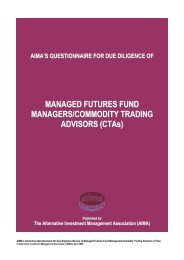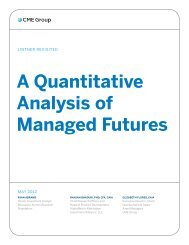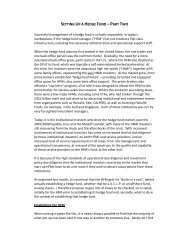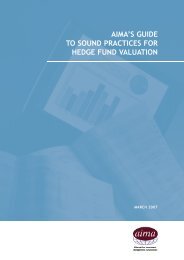Stochastic Volatility and Seasonality in ... - Interconti, Limited
Stochastic Volatility and Seasonality in ... - Interconti, Limited
Stochastic Volatility and Seasonality in ... - Interconti, Limited
You also want an ePaper? Increase the reach of your titles
YUMPU automatically turns print PDFs into web optimized ePapers that Google loves.
where D(t; T ) <strong>and</strong> B(t, T ) are described <strong>in</strong> (11) <strong>and</strong> (12). Assume that we are look<strong>in</strong>g at the<br />
futures position at May 17 <strong>in</strong> a given year; this date is chosen as a po<strong>in</strong>t <strong>in</strong> time t where<br />
the seasonal component <strong>in</strong> volatility is zero (i.e. ν(t) = 0). Also, assume that the spot price<br />
volatility is √ v t = 0.20 (i.e. v t = 0.04). If the <strong>in</strong>volved futures contract is very short (i.e. t = T ),<br />
we have that D(t; t) = B(t; t) = 0 <strong>and</strong> that the position is only exposed to spot commodity<br />
price risk. Insert<strong>in</strong>g the parameter po<strong>in</strong>t estimates <strong>in</strong> Table 3 <strong>in</strong>to (29), the expected excess<br />
return <strong>in</strong> this case is negative <strong>and</strong> equal to -2.51%. Longer term futures prices are negatively<br />
related to the convenience yield (see equations (10) <strong>and</strong> (11)). Hence, s<strong>in</strong>ce the risk premium<br />
on convenience yield risk is estimated negative, longer term futures contracts will have a higher,<br />
<strong>and</strong> possibly positive, overall risk premium when us<strong>in</strong>g the po<strong>in</strong>t estimates <strong>in</strong> Table 3. Also,<br />
as seen by numerical <strong>in</strong>spection, futures prices at the po<strong>in</strong>t estimates are negatively related to<br />
volatility. S<strong>in</strong>ce the risk premium on volatility risk is estimated negative, this also implies that<br />
longer term futures contracts will have a higher, <strong>and</strong> possibly positive, overall risk premium.<br />
However, when solv<strong>in</strong>g (11) <strong>and</strong> (12) for D(t; T ) <strong>and</strong> B(t, T ), <strong>and</strong> by <strong>in</strong>sertion <strong>in</strong> (29), we f<strong>in</strong>d<br />
that the overall expected excess return is -1.95% if the <strong>in</strong>volved futures contract has time to<br />
maturity equal to half a year. Likewise, the overall expected excess return is -1.77% if the<br />
<strong>in</strong>volved futures contract has time to maturity equal to one year. 17 In all the cases considered<br />
above, the risk premium on the long futures <strong>in</strong>vestment position is negative. Furthermore, s<strong>in</strong>ce<br />
the futures price is expected to drift downwards this is also a case where the futures price is<br />
above the expected future spot price, <strong>and</strong> thus a situation usually referred to as “contango.” 18<br />
On the other h<strong>and</strong>, the only risk premia parameter which is significantly different from zero<br />
is λ v <strong>and</strong> if we set λ P = λ δ = 0, normal backwardation would be the situation. It is thus<br />
concluded that no strong <strong>in</strong>ference can be drawn from the risk premia po<strong>in</strong>t estimates with<br />
respect to the quantitative implications as well as the qualitative implications for expected<br />
soybean <strong>in</strong>vestment returns.<br />
Structure of measurement error covariance matrix<br />
The measurement noise term added <strong>in</strong> the state space specification of the model is estimated<br />
to have a covariance matrix as implied by the stated correlation matrix of measurement errors<br />
<strong>in</strong> Table 3. Thus, us<strong>in</strong>g the one-to-one relationship between the tabulated correlation matrix<br />
17 By solv<strong>in</strong>g (11) <strong>and</strong> (12) numerically, we <strong>in</strong> the particular cases f<strong>in</strong>d that B(t; t + 0.50) = -0.03151, D(t; t +<br />
0.50) = −0.41071, B(t; t + 1.00) = -0.03475, <strong>and</strong> D(t; t + 1.00) = -0.68403.<br />
18 see e.g. Hull (2000, p. 74) for this def<strong>in</strong>ition of contango versus normal backwardation.<br />
22


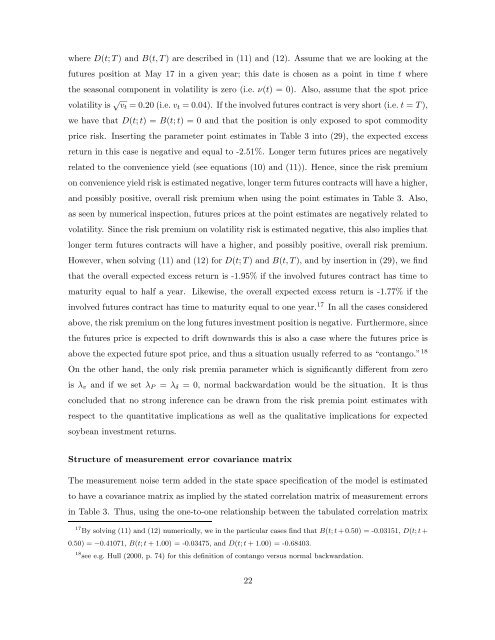
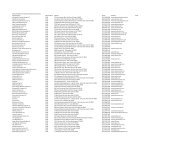
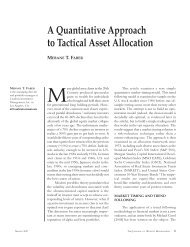

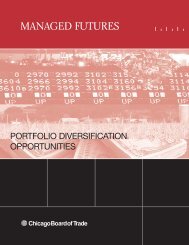
![Definitions & Concepts... [PDF] - Cycles Research Institute](https://img.yumpu.com/26387731/1/190x245/definitions-concepts-pdf-cycles-research-institute.jpg?quality=85)
